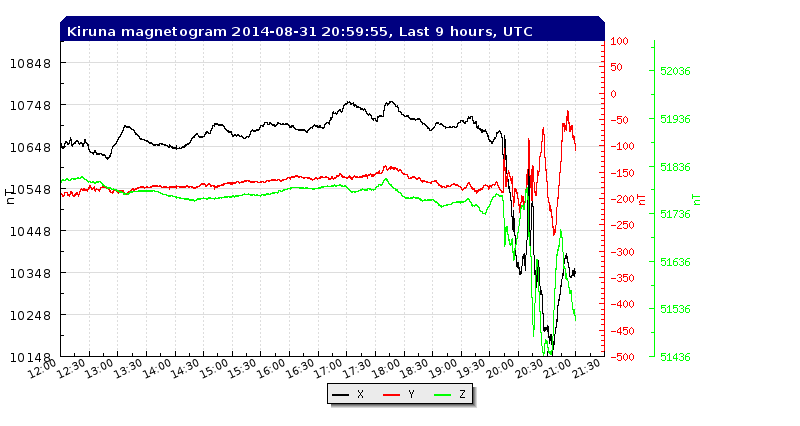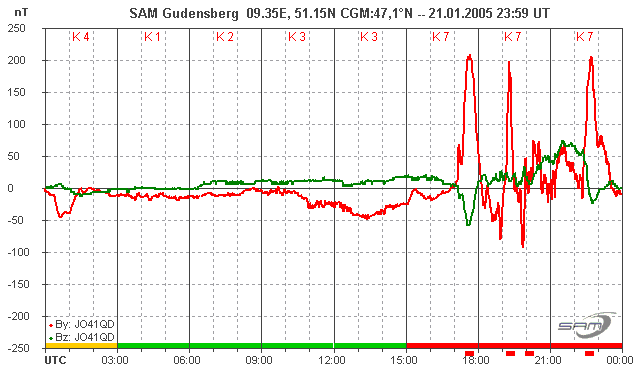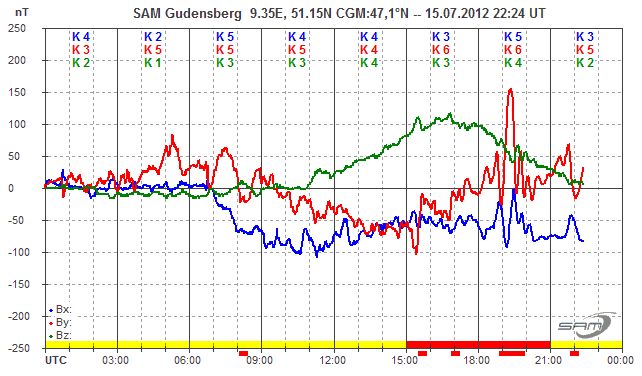A magnetometer is a device for measuring magnetic flux density. This instrument is essential for the timely determination of auroras. Magnetometers are distributed worldwide and provide location-based real-time data.
From a network of several magnetometers, it can be determined approximately where the auroral oval is located. The Tromsø Geophysical Observatory operates such a network. A well-prepared graphic showing the locations along with magnetometers can be found here: CLICK
Important magnetometers are stationed in Kiruna (SE), Scheggerott (DE), Gudensberg (DE), and Bellinzona (CH).
Geomagnetic Storm
Magnetometer
Live Plot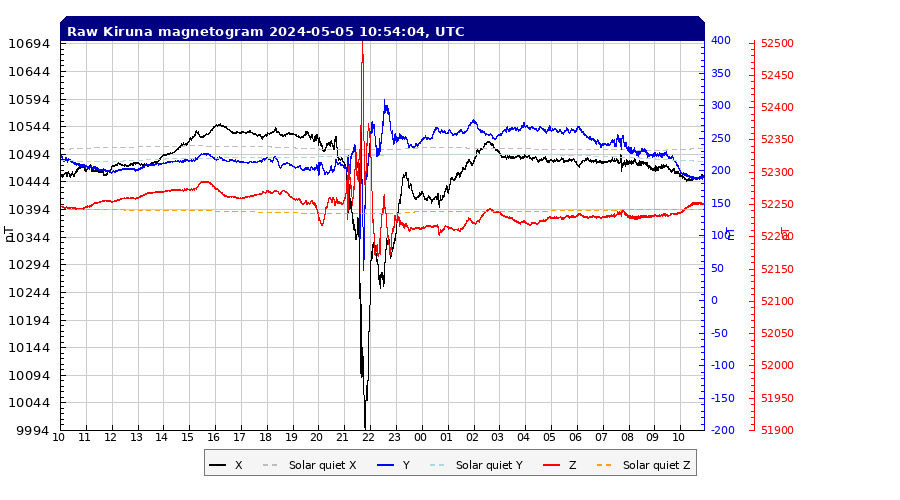

Magnetometer in Kiruna (Sweden)
Live Plot

Magnetometer in Hammoor (Klaus Hartwig)
Live Plot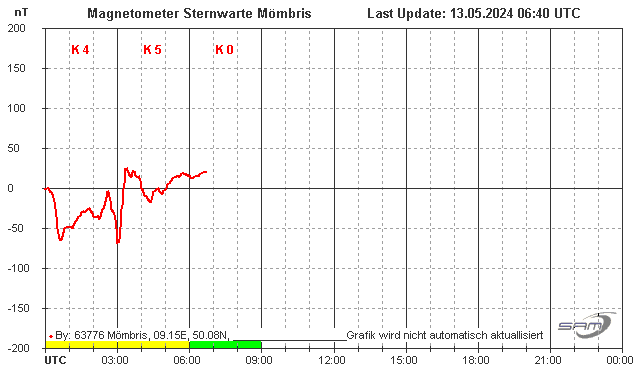

Magnetometer in Mömbris (Observatory Bömbriss)
GOES Magnetometer
The GOES satellites are in a geostationary orbit around the Earth. They are within the influence of the Earth's magnetic field and can measure it. The graphic below shows the current strength of the Earth's magnetic field. The "peaks" occur because the magnetic field is more compressed and thus weaker on the day side, where the solar wind blows from. The GOES satellites are in a geostationary orbit, meaning their projected shadow is always at the same point on Earth's surface. Thus, they orbit the Earth in 24 hours. This is the reason why the "peaks" in the bottom plot are 24-hour periodic.
Live Plot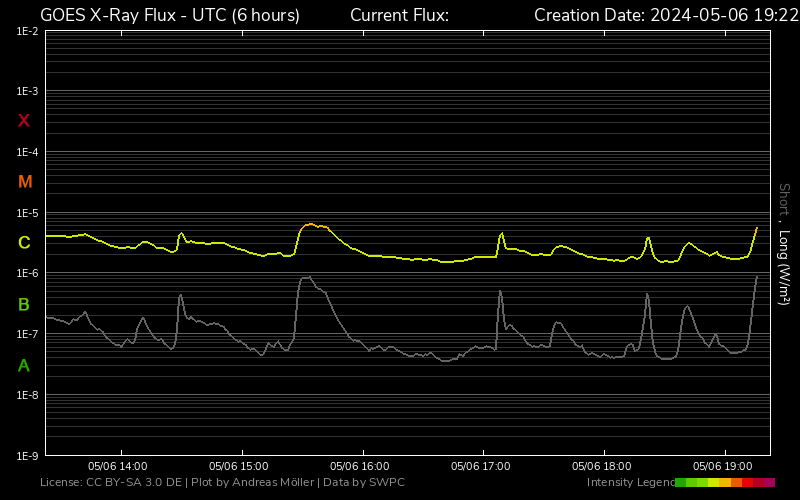

Magnetometer of the GOES satellites (SWPC)
Magnetopause Crossing
Sometimes the solar wind (e.g., through a CME) compresses the Earth's magnetic field so much that geostationary satellites leave the influence area of the magnetic field. They then penetrate the magnetopause and find themselves in interstellar space.
A magnetopause crossing can be identified by the magnetometers of the GOES satellites. When the magnetic field strength abruptly drops below zero, meaning the plot breaks off, the satellite penetrates the magnetopause. Magnetopause crossings are indicative of severe geomagnetic storms and consequently strong auroras.
KP Index
The KP index is a global value used to determine the strength of a geomagnetic storm. The values from various magnetometers contribute to the KP index.
The KP index is determined from the data of 13 observatories distributed worldwide. Each observatory determines the K index for its own location. The data from each station is collected and evaluated at the GFZ-Potsdam.
Live Plot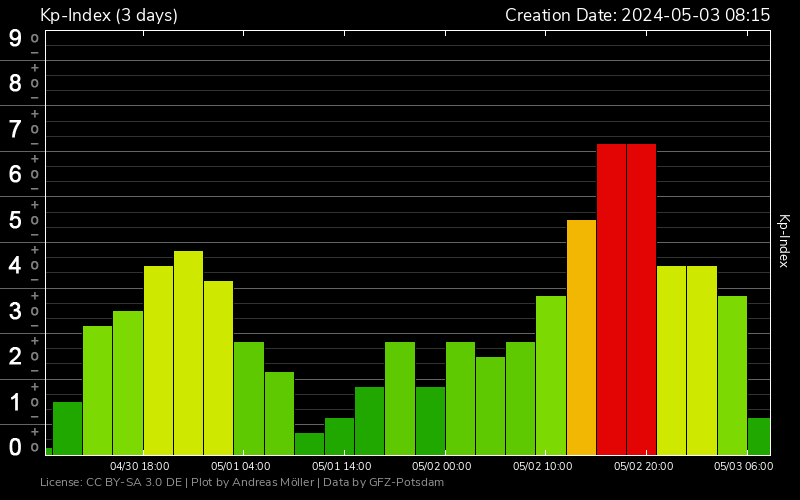

KP Index of the Last 3 Days (Data: GFS-Potsdam, Plot: Michael Theusner)
The Kp index is a relatively reliable indicator for the appearance of auroras in Germany. Roughly speaking:
- KP = 6 - rarely
- KP = 7 - 50%
- KP = 8 - almost always
- KP = 9 - always
